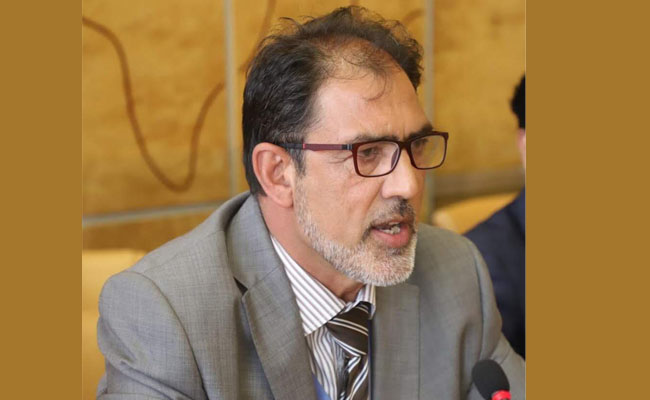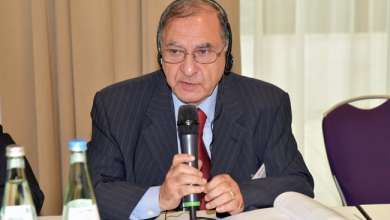74 years of Indian occupation: Paradise turned hell

By Altaf Hussain Wani
Chairman Kashmir Institute of International Relations
74 years down the line the people of the Indian occupied Jammu and Kashmir continue to suffer under India’s brutal and belligerent military occupation. Caught in a dangerously conflicting situation Kashmiris have terribly suffered by the India’s barbaric aggression, both in terms of loss of human life and material devastation.
Particularly, during the past 30 years, the Indian armed forces operating under a host of draconian laws have wreaked havoc in the region by killing over 100,000 civilians. 8 to 10 thousand people, mostly young boys between the age of 15 to 30 who have been subjected to forced disappearances remain buried in over 7,000 mass graves spread across the length and breadth of Indian occupied territory. The silent war going on in the region has left no facet of life unaffected. The political and human rights situation in the region has further worsened since India’s racist regime took a unilateral decision to annex and dismember the territory into two Union territories on 5th August 2019. While social, political and economic life remains critically suppressed in the valley, people feel lost and completely robbed of their identity. Months within the repealing of Article 370, Indian authorities arrested 15,000 Kashmiris, mostly youth — families of many of whom were not informed about their whereabouts. Not to forget the hundreds of top-rank politicians who were arrested and booked under infamous laws and left to rot in jails outside the Kashmir valley.
What ails the besieged Kashmir valley, today, is the ongoing massive and multifront socio, political and cultural onslaught against its indigenous population by the Indian government and its ultranationalist policies that have pushed the region deeper into a quagmire of uncertainty, chaos and lawlessness. Peoples’ fundamental freedoms such as right to freedom of speech and expression, right to peaceful assembly and right to peaceful protest remain strictly prohibited. Illegal imprisonment of political activists under sedition laws, and a witch-hunt against civil society, rights activists and journalists goes unabated and there seems to be no end to the punitive actions that are widely used by the Indian government as a tactic to enable complete silence on Kashmir.
Kashmir, once hailed as a true sanctuary of peace and tranquility, has now been virtually converted into a theater of war where almost a million military and paramilitary troops armed to the teeth have been deployed to control a small population. According to the Jammu Kashmir Coalition of Civil Society (JKCCS) the strength of the armed forces is about 7,50,9817. In addition to J&Sk police and additional 38, 000 troops were rushed to the region a couple of days before the BJP government introduced so-called J&K Reorganization Act 2019, which ultimately led to abrogation of the article 370 of the Indian constitution and bifurcation of the state into two union territories. The unilateral move, deemed by Kashmiris as an atrocious assault on their distinct national, political and cultural identity, serves as further evidence to the fact that Kashmir has moved from Wolfe’s first to the second model of colonialism.
The change in the constitutional status of the state was purposely made to provide the Indian government the much needed political and legal leverage to implement its Hindutva agenda, establish hegemonic control over Kashmir and bring material change in the region through the wholesale extermination of the local population, in contravention to Geneva conventions and UN resolutions on Kashmir.
But the most unfortunate part of this macabre tale of war and destruction in Kashmir is that India views settler colonialism as the only and final solution to the Kashmir dispute. This crooked mindset of the Indian rulers has led to further marginalization of majority population in Kashmir and the imperialistic policies such as landgrab, extermination of the locals, forced evictions, exploitation of natural resources, rampant aggression, killings, arbitrary arrests, extra-judicial killings, forced disappearances and systematic genocide of the Kashmiri youth by the Indian forces speak volumes about the incumbent racist regime’s apocalyptic vision and attitude towards Kashmir and the Kashmiri people.
There is no denying the fact that the successive Indian rulers have treated Kashmir as a colony; exploitation of its natural resources, killing and maiming its population through heavy militarization has been their consistent policy. But the new set of rules the BJP government had introduced to govern the territory under the guise of the J&K Reorganisation Act can simply be termed as constitutional terrorism. The induction of new rules and the wholesale amendment of the age-old state laws have hazardous impacts on the region’s demographics that will fundamentally change the nature of the Kashmir dispute, its political and religious landscape, culture, language, and identity of the Kashmiris. These manipulations and constitutional amendments are not only in open contravention of the UNSC resolutions on Jammu Kashmir, but against the International human rights and humanitarian law and 4th Geneva Conventions.
The regional and international human rights watchdogs have time and again raised their concerns over the Indian government’s chauvinistic and ultranationalist policies towards Kashmir. But it is quite disappointing to note that such repression and cruelty continues and the world looks away unabashedly. The deafening silence and indifference towards the Kashmiris on the part of the global community has further emboldened the occupying power to establish regional hegemony and suppress the Kashmiris’ legitimate struggle for right to self-determination.
Meanwhile, India’s present day mass radicalization, intolerance and extremism constitutes an existential risk to Kashmiris who are caught between the deadly conflict and rising Hindutva in India, which has now emerged as a grave threat to regional peace and stability. It is imperative that the global community must take notice of this new scourge of racism as well as the continued conflict in the Himalayan region that besides consuming three generations of the Kashmiris has been a major cause of unrest and tension in South Asia.
Tailpiece: Since the people of the UN recognised disputed territory of Jammu and Kashmir continue to bleed profusely under India’s belligerent occupation. It would be nothing but a great travesty of justice on the part of the international community to leave the hapless Kashmiris at the mercy of India’s ruthless occupation that has now virtually moved from Wolfe’s first to second model of colonialism.
Writer is chairman KIIR and Vice Chair JKNF and can be reached @ saleeemwani@hotmail.com chairman@kiir.org.pk





